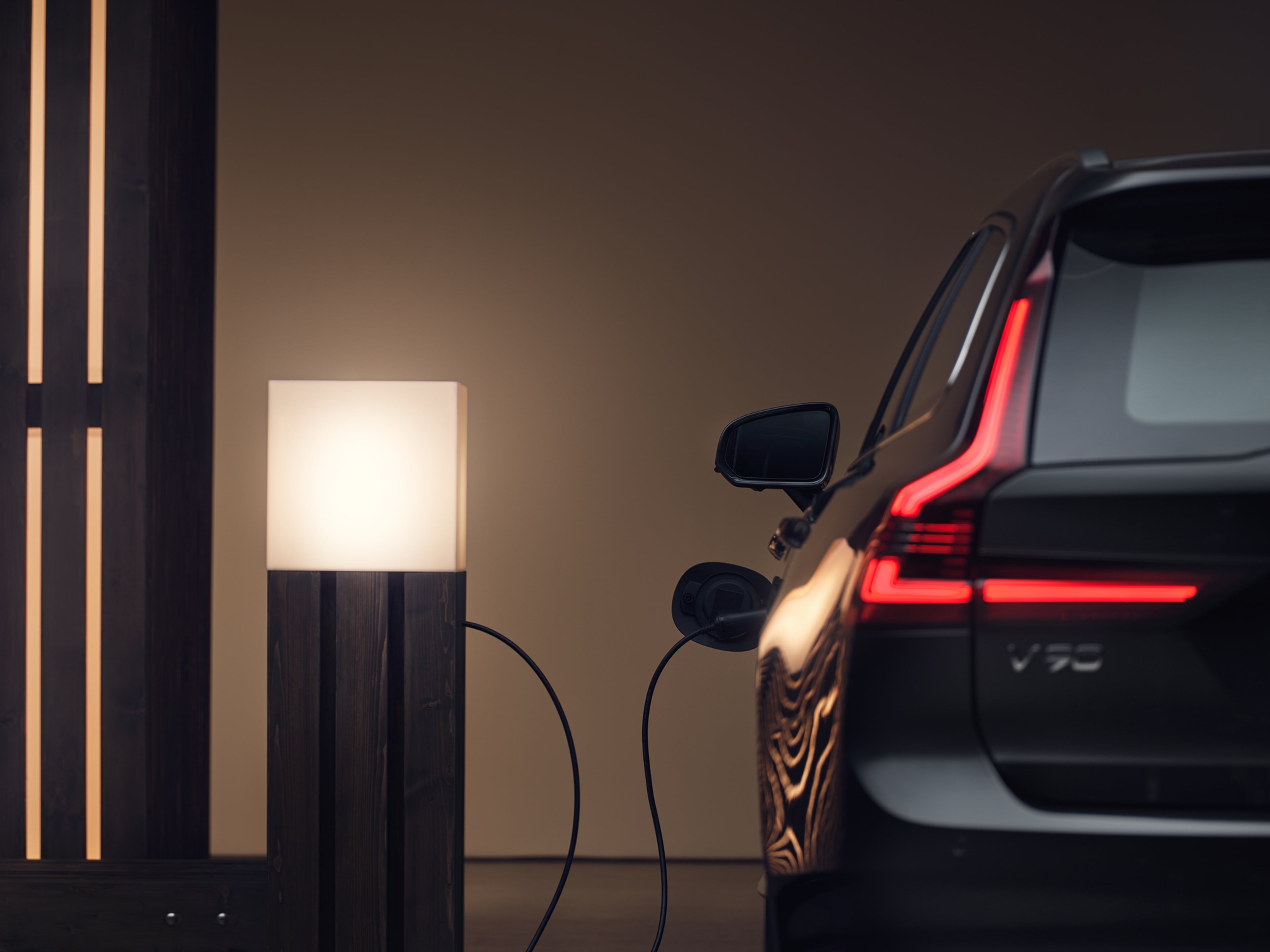What is the difference between AC and DC charging?
Discover the differences between AC and DC charging and how they keep your electric car charged.

A Volvo V90 charging at home, showcasing the convenience of AC charging.
If you have a fully electric or plug-in hybrid car, you have probably encountered the terms AC charging and DC charging. But what do they really mean, and what is the difference? We will explain the differences, as well as the advantages and disadvantages, so you can understand how each system works.
What is AC charging?
AC charging, or alternating current charging, is the most common method for charging electric cars and the system you use when charging your car at home. Since the power needs to be converted during AC charging, it will take longer to charge your car than with DC charging. Depending on factors like the charging box, battery size, and car model, you can expect it to take between 6-12 hours to fully charge your fully electric Volvo car with AC charging when using a charging box.
With the Volvo wallbox, you can easily charge your fully electric car or plug-in hybrid at home.
How AC charging works
AC charging involves converting the alternating current from the power grid via the car’s onboard charger (OBC) into direct current (DC), which is stored in your car's battery. The charging speed for AC is measured in kilowatts (kW), and most electric cars can be charged at a speed of up to 11 or 22 kW. AC charging is common at homes, but can also be found at public charging stations and workplaces. When charging your electric car at home overnight, it may be advisable to do so when electricity prices are typically lower.
Advantages of AC charging
- Ideal for home use: AC chargers or wallboxes are almost exclusively offered for private use if you live in a house.
- Cost-effective: Installing a charging box at home does not have to be expensive or complicated. However, a certified electrician must do the job.
- Smart features: Most charging boxes, including the Volvo wallbox, come with smart features allowing you to schedule your car's charge via your mobile phone.
Disadvantages of AC charging
- Slower charging speeds: Compared to DC charging, AC charging has slower charging speeds. Speed may not be a significant concern if you are charging your car overnight, but it's worth considering if you ever need a fast charge, for example, during long trips.
What is DC charging?
DC charging, or direct current charging, is a more advanced and faster solution for charging fully electric cars. Unlike AC charging, DC charging delivers direct current to the car without the need for the conversion process via the car’s onboard charger. This type of charging occurs at public charging stations, not at home.
How DC charging works
DC charging stations convert alternating current to direct current directly at the charging station, allowing direct current to flow directly into the car’s battery. This results in significantly faster charging speeds, and some charging stations can provide up to 350 kW of power, with the potential for radically shortened charging times.
Advantages of DC charging
- Fast charging: DC charging offers much faster charging speeds than AC charging, making it a great option when you need to recharge your car's battery while on the go.
- Growing number of charging stations: The number of charging stations has increased significantly in recent years, and the network continues to grow as more fully electric cars hit the roads.
Disadvantages of DC charging
- Higher cost: Charging your car at a DC station is faster but often more expensive than AC charging at a public station or at home.
Where can you charge your car?
If you have a fully electric or plug-in hybrid car, you may need to charge your car while driving, just as you sometimes need to stop to refuel a petrol or diesel car.
This, however, doesn't have to be a significant issue as you can easily find public charging stations in the Volvo Cars app or directly on your centre display. Choose where you want to charge your car and follow the navigation to get there. Read more about charging your electric car , whether at home or on the road.
Volvo Cars’ solution for home charging
We recommend installing a wallbox if you have an electric car and live in a house. It is cost-effective and allows you to charge your car when it suits you. Feel free to charge your car overnight when you don't need to drive, as electricity prices are often lowest during that time.
With the Volvo wallbox, you can easily charge your fully electric car or plug-in hybrid at home. Its capacity of up to 22 kW helps to make it a future-proof investment. It’s even prepared for bi-directional charging, opening possibilities to connect your fully electric car to your house. The wallbox can be mounted on a wall indoors or outdoors near where your car is parked. If you connect to the charging box via WiFi, you can check your charging status or schedule your charging via your mobile phone, computer, or tablet.
Are you ready to electrify your ride?